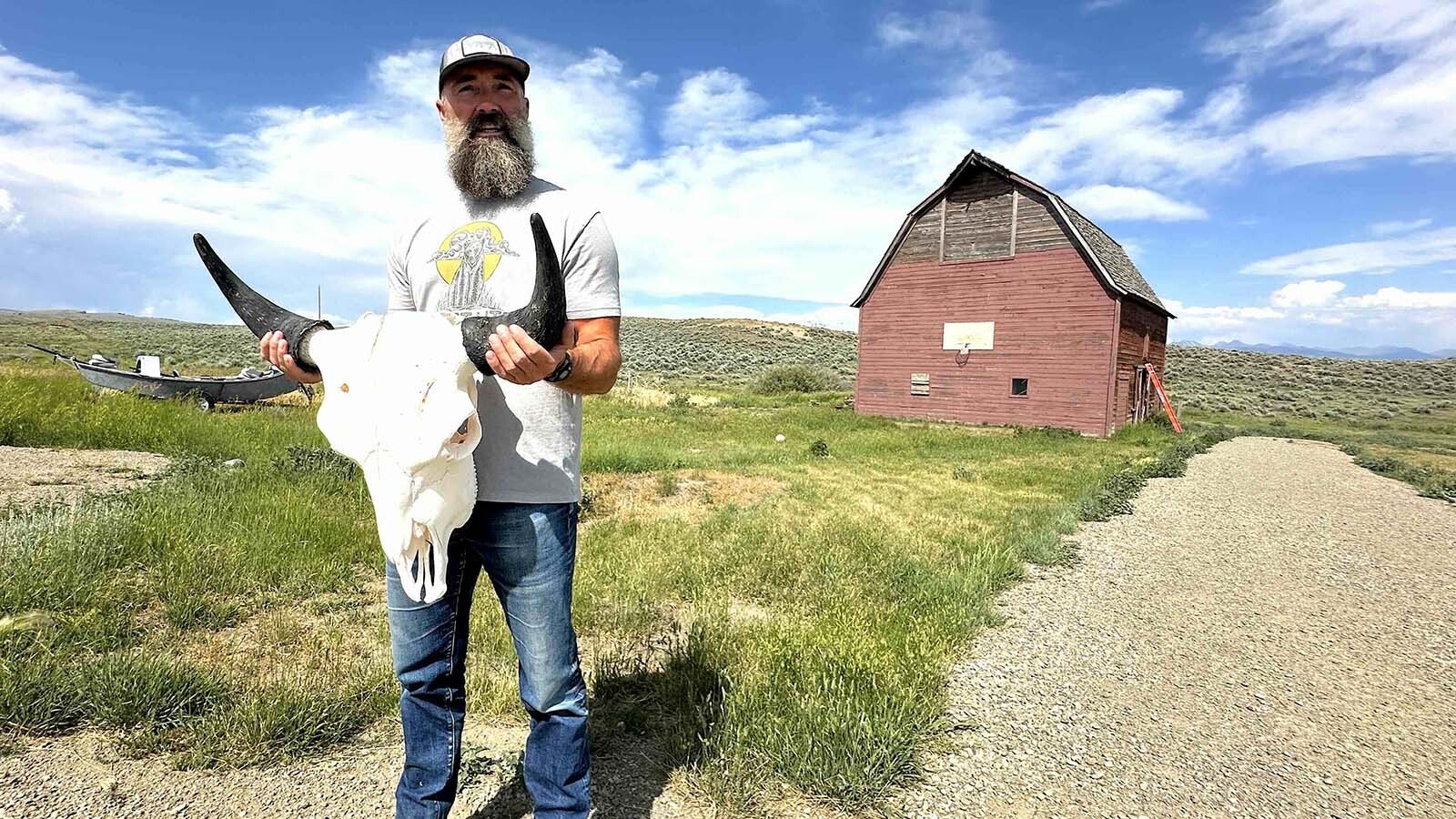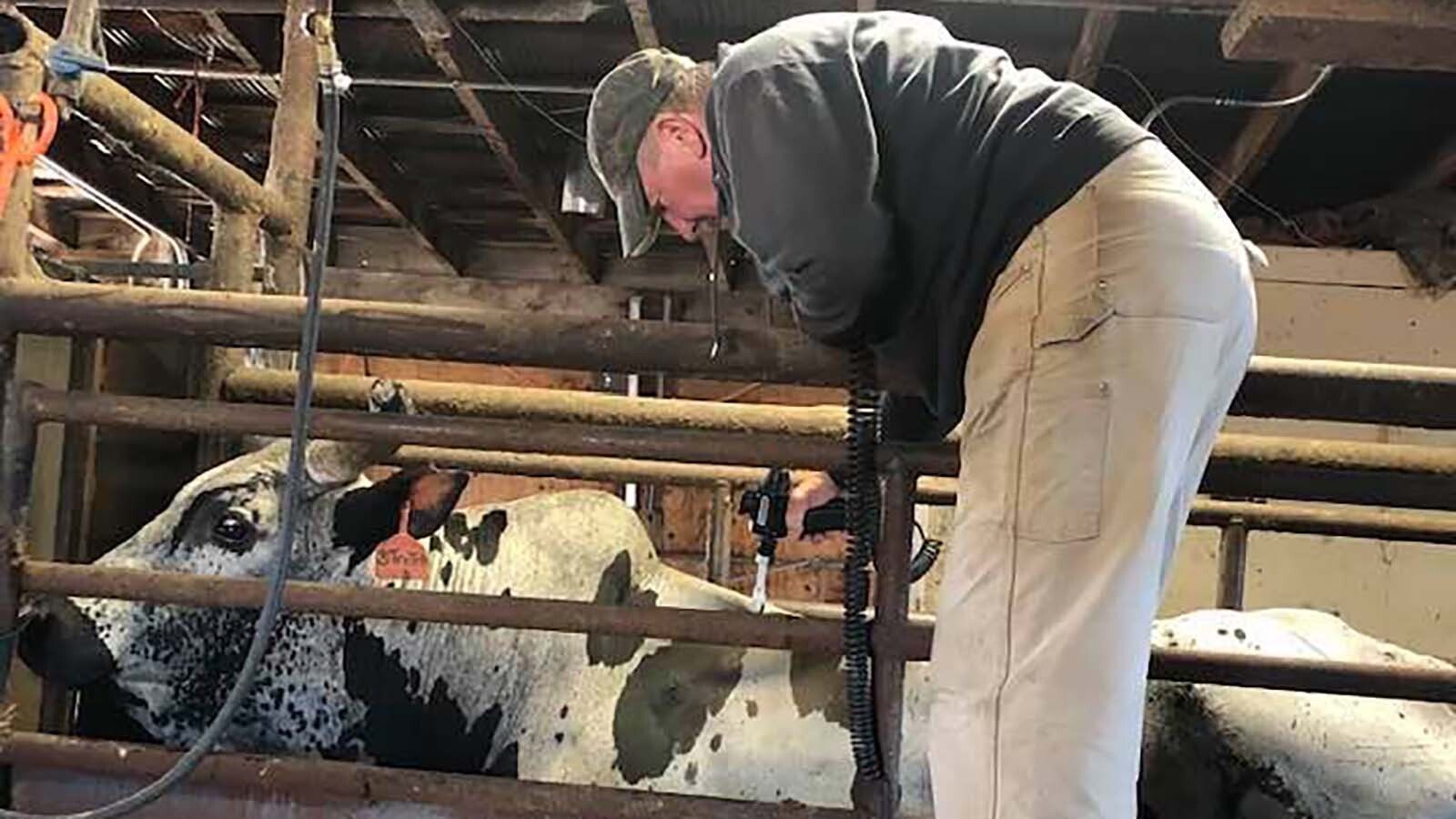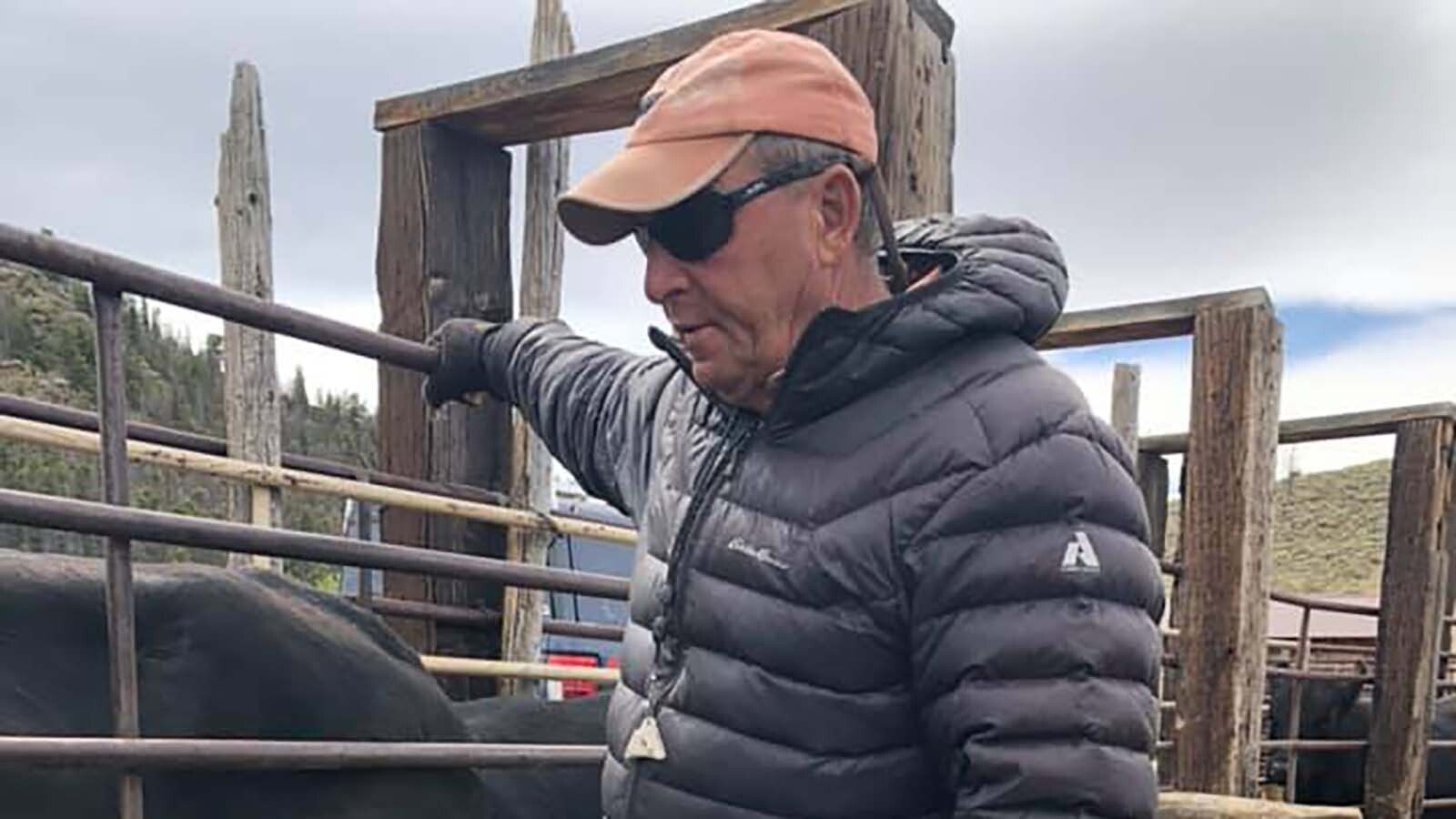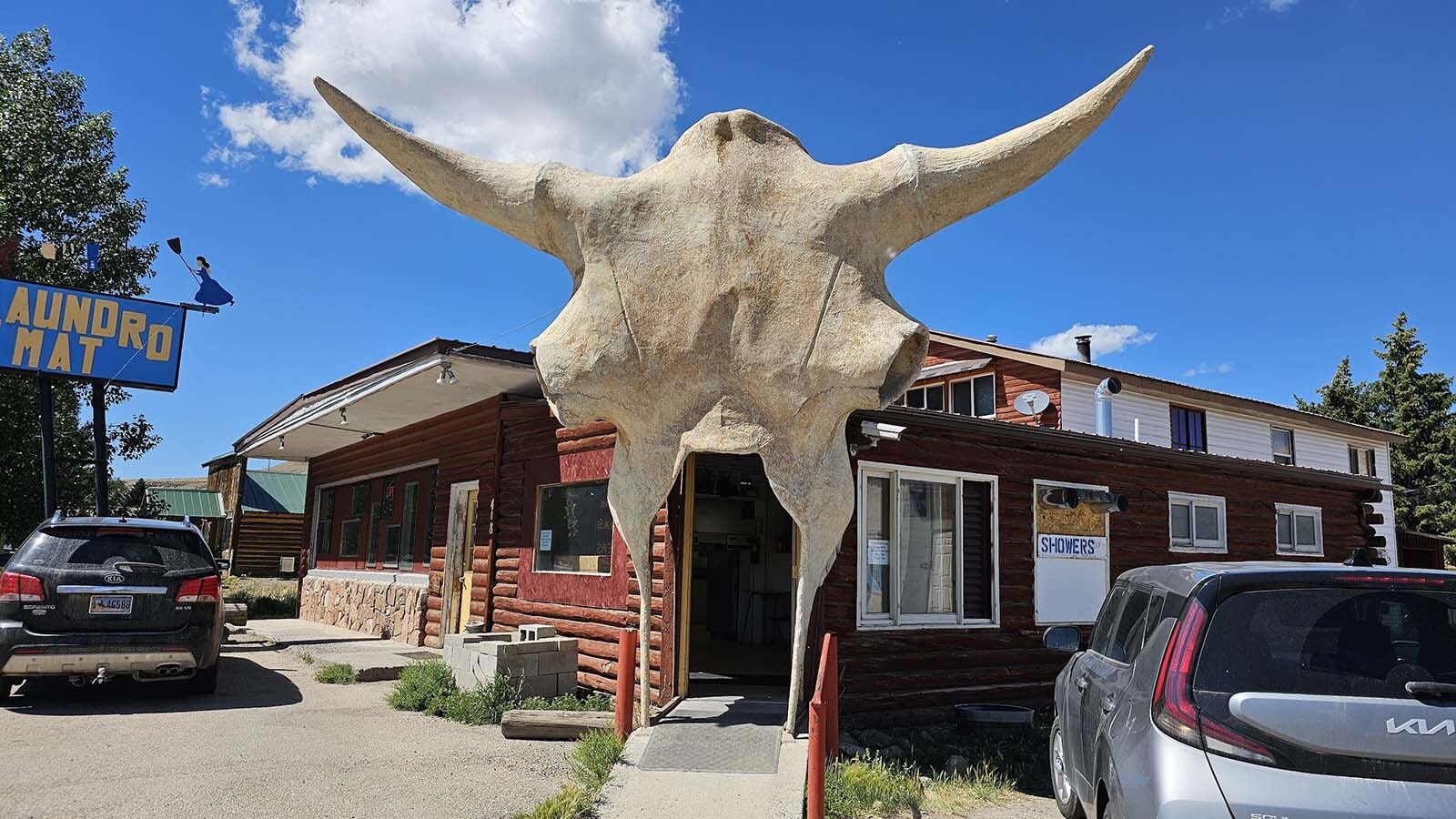DOUGLAS — Brendan Blackburn pulled his semitrailer off the Interstate 25 exit onto a side road between here and Glenrock.
It’s 7 a.m.
The 1996 Peterbilt with the long nose and 53-foot trailer turns down a gravel road kicking up some dust on its mission. After a half-mile or so, Blackburn swings his rig into the Table Mountain Ranch where rancher Phil Dziardziel and crew were working to separate momma cows from their babies.
On this day, the customer is familiar. The Dziardziel family has used Blackburn and his family for years to take their cattle where they are needed. Today, it’s to their summer pasture.
While the romantic image of the iconic Western cattle drive done on horseback is still alive and well, many ranchers depend on families like Blackburn’s to get their cattle where they need to go.
“I’ve known these guys my whole life,” Blackburn told Cowboy State Daily early Thursday morning. “My dad and grandpa used to haul for them for years.”
However, the life of a trucker hauling cattle often involves being ready for the unexpected. Weather on ranch roads and pickup spots can be an issue. This day the sun is up, and the roads are dry.
When he is not going to a familiar location, Blackburn said backing the long trailer with its various doors and compartments inside for livestock can be a challenge when trying to line up with the ground entry chute. Some ranches have chutes that were built for straight cattle trucks used during the 1950s and 1960s.
Family Business
The Blackburn Cattle Co. is based out of Douglas and is owned by his father and mother, Don and Shari Blackburn. Blackburn, 26, has been driving for nine years, and in addition to driving, schedules all of the firm’s trucking. He said his grandfather drove trucks all of his life and his father would drive trucks on the weekends.
The 30-year-old family business also has trailers to haul hay, grain and equipment.
At Table Mountain Ranch and out of the truck, Blackburn walks to the back of the trailer to open the gate. Cows from the adjacent pens can be heard mooing loudly as their calves are separated from them into different gated areas by the ranch team.
Each of the ranchers has a little plastic paddle to tap the cows in the right direction. A dog is barking at the calves’ heels to help get the job done.
Blackburn walks up the chute and into his trailer. There are five compartments inside: the nose at the front of the trailer; the deck, which is a compartment on top in the middle of the trailer; a belly section beneath the deck; the dog section up above and to the right at the back of the trailer; and the back entrance compartment.
The dog section is made ready for the run of calves into the trailer. Blackburn said sometimes he needs to think about weight distribution, but also important is the ability of the animals to stand comfortably.
Making Room
Like packing a moving van, there’s a lot of geometry and experience involved in doing it right. Only furniture doesn’t move on its own or get stubborn or refuse to respond to prodding. And it doesn’t jostle around on its own once loaded.
“A lot of it just depends on room,” he said about packing cattle in a trailer. “You don’t want to get anything (laying) down because it’s a live load. You don’t want anything in too tight. Once they get down sometimes it’s tough to get them to stand back up.”
The purpose on this run is to take 41 “pair” — or 41 mommas and 41 calves — to their seasonal grazing grounds at the Rattlesnake Grazing Association by Alcova a little more than an hour to the west.
“This time of year, you haul cows and calves as pairs and you take them to summer pasture,” Blackburn said. “In the fall, you haul the calves off to the sale, and then you bring the cows home so they can winter at their home pastures.”
The Douglas native typically travels within a 500-mile radius of the town. He puts family first and tries to be home at night.
And like anyone driving a high-profile truck in Wyoming, Blackburn pays close attention to the wind.
“Anything over 45 mph you can pretty easily lay one (the truck) over,” he said. “We don’t really know when a wind gust can blow you over. (You’re thinking) do you take the two lanes and hope to get home or just have to park where you are.”
Cattle Drive
To get the the trailer filled, the calves are run into separate compartments first, and then the mothers, mooing as they go, are put into their spaces. It takes a few runs with a specific number of animals for a specific compartment, and a lot of moving of gates outside and then inside the trailer to get all the animals in place.
At one point, Blackburn is standing above the back door just inside the trailer, straddling the sides as the run of animals underneath him gets completed.
The entire operation takes less than a half hour. He chats with the rancher and then gets into his truck to chauffeur his load to greener pastures.
Blackburn said he has relationships with 10 to 15 operations in the area similar to Table Mountain Ranch, where it is almost like family because of generational ties between the businesses. But he hauls for many other ranches as well.
As he stands by the door of the Peterbilt, Blackburn said it was bought from his cousin six years ago, rebuilt, repainted and a new sleeper installed. Blackburn has put close to 550,000 miles on it and calls it a “good truck.”
His role driving cattle is something he enjoys.
“I like the different places you get to see and the different people you get to meet,” he said. “Especially hauling cows, you get to go to such a variety of places, you don’t really know where you are going to end up. Some of them might be good, some of them might be bad, but at the end of the day you meet a lot of good people and get to see a lot of cool places.”
Contact Dale Killingbeck at dale@cowboystatedaily.com
Dale Killingbeck can be reached at dale@cowboystatedaily.com.











